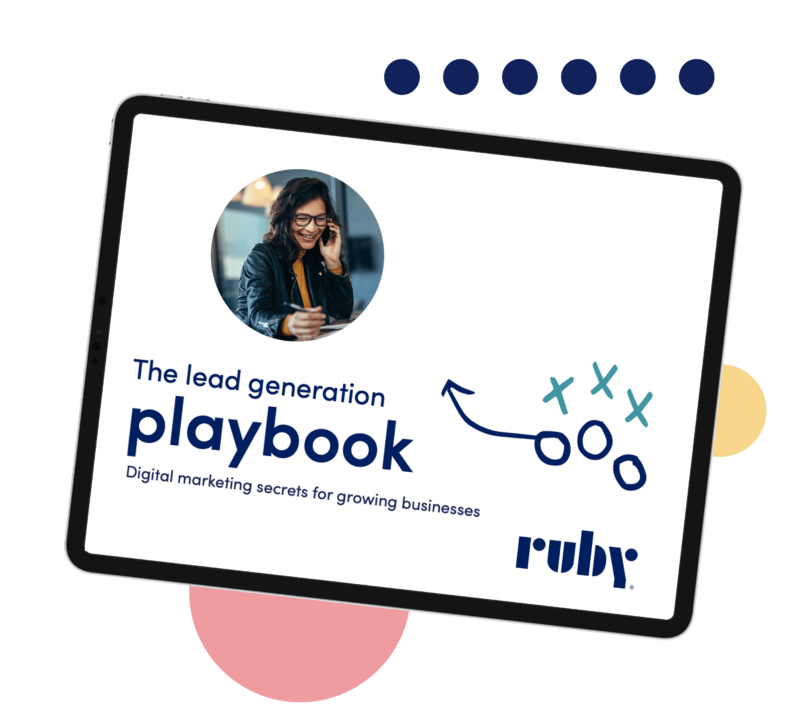
A campaign launch is a strategic initiative to introduce a product or service to potential customers. It involves creating awareness, generating interest, and encouraging action through targeted marketing efforts. By developing a remarkable first marketing campaign, a business can ensure its offerings reach and resonate with its intended audience.
How, you ask? How can you make sure your campaign reaches and resonates with your potential customers or clients? You’ll do it the same way you launched your business in the first place—by following a plan. So let’s dig in and review the steps you’ll need to take to make your campaign a major success.
Step 1: Analyze your audience.
To market to anyone, you’ve got to know who they are, what they want, and what your business has to offer them. Understanding your target buyer’s persona is critical and can’t be overlooked.
Who are you trying to sell to? What’s the demographic? What do they like, what are their obstacles or problems you’re trying to help with?
“Gather demographic information to better understand opportunities and limitations for gaining customers,” advises the Small Business Administration. “This could include population data on age, wealth, family, interests, or anything else that’s relevant for your business.”
Whatever you do, don’t make assumptions. Research, write down findings, and do some competitor snooping to see what others are doing (and whether it’s working for them or not).
Use your findings to inform your campaign’s messaging strategy. Be tailored and specific because marketing costs money—and savvy businesses don’t squander their ad spend firing shots in the dark.
Step 2: Decide what action you want people to take.
Once you know who to target for your ads, make it clear what behavior you’re seeking to elicit from them. Presumably, it’s to buy something… but how?
Do you have a direct link to a website where they can make a purchase? Or are you trying a longer approach, reeling them in by getting them to sign up for a newsletter or download a free lead magnet? The ultimate goal remains the same, i.e. for them to buy something. Your business model may simply have a longer sales funnel, which is common (especially for big-ticket items or expensive services).
Long story short, know your campaign objective and provide a clear, easy-to-do call to action.
Step 3: Think about your KPIs.
How will you know if your campaign is on track or floundering? Through the magic of KPIs—key performance indicators!
KPIs are metrics to gauge a campaign’s performance. As you establish them, go back to your objectives. Trying to sell more of a certain product? Take note of how many you sold before the campaign, then track sales during the campaign. Want to boost website traffic? Take note of how many visitors and pageviews you got before the campaign, then select KPIs based on how well it does during and after.
Note, businesses can benefit greatly from outsourcing these tasks to an experienced advertising agency. Or if you decide to tackle things on your own, consider bringing on a virtual receptionist or chat agent to manage incoming calls and queries, so you can stay focused.
Step 4: Choose your channels.
How do you plan to share your campaign? Whatever avenues you choose—print ads, radio, Instagram, Facebook, YouTube, email, search engine optimization, content marketing, podcasts—those are your marketing channels.
There’s no shortage of options. The trick is picking the right ones to reach your audience. Going back to researching their behavior…where do they spend their time? Do they like to read blogs? Are they social media buffs? Do they attend events where well-placed banners might catch their eye?
Select channels that will most effectively reach your audience and align with your campaign goals!
Step 5: Set your budget.
As they say, it takes money to make money. Or, as we say, it takes money to pay for marketing campaigns which, if done right, can generate leads and sales, thus increasing your revenue.
Determining your ad spend isn’t only about how much cash you can afford to invest. Ad spend should also be based on how much money it should realistically take to achieve your desired return on investment (assuming your campaign is run efficiently and effectively).
Consider the costs of creating content, paid advertising, software, and other services you want to try. A planned budget can save you from burning through your ad spend before your campaign hits its targets.
Step 6: Build your schedule and task list.
Speaking of planning—to keep your campaign on track, set a schedule with time frames for task completion.
When will you need your content or ad copy written? Do you require visuals made beforehand? Are there dates, such as holidays, when you want campaigns to go into effect? How long do you plan to test and evaluate your campaigns?
Having a detailed schedule provides you with a roadmap to get where you’re going. It’ll keep you focused, organized, and on-target.
Step 7: Craft your message.
Don’t see yourself as the Hemingway of marketing copy? No problem—there are plenty of affordable freelance writers available on platforms such as Upwork.
Need someone to knock out your graphics or assist with social media marketing or SEO? Again, freelancers are an affordable way to go.
If money is no object, feel free to hire a full-service marketing agency… but keep in mind that even those often subcontract work out to freelancers.
Ideally, even if you outsource the creative parts, stay involved to ensure the strategy and ads align with your business values. Ads must be clear, engaging, and relevant to the needs and interests of the intended audience. If the story doesn’t resonate, it won’t persuade them to act.
Step 8: Stand out!
Marketing has to stand out from the crowd, period. In today’s world of ad saturation and digital distractions, that’s not as easy as it used to be. These days it takes a willingness to be different and bold.
That said, keep your audience (and your product or service) in mind. Some customers aren’t as open to an unconventional approach as others, and some products or services aren’t conducive to, say, a humorous or offbeat campaign.
Step 9: Develop outstanding assets.
Once you have your message and general ideas ironed out, it’s time to develop your marketing assets.
Whether it’s a website, blog, copy, graphics, videos, jingles, emails, text messages, or other concepts you have in mind, these assets should be high-quality, must sync with the overall campaign, and should be optimized for the channels they’ll be used on.
Step 10: Launch it!
Once your campaign strategy is outlined, your schedule is set, and your assets are produced, it’s go time!
Give everything a final review. Solicit objective feedback from stakeholders. Then start your countdown sequence and prepare for liftoff!
As your campaign launches, keep an eye on initial responses. If on social media, pay attention to comments or feedback. The last thing you want to do is launch a campaign and then ignore the immediate results.
Step 11: Measure your performance.
Use your KPIs to assess how your campaign is performing. Are you reaching your target audience? Are they engaging with your content?
Use the insights to make adjustments as you go, such as tweaking the wording of your call to action or plugging more money into the channels that are paying off.
Remember: it probably won’t be perfect the first time.
Like businesses, marketing campaigns don’t succeed by accident. They take meticulous planning, research, creativity, technical know-how, and continuous evaluation.
But even then, you might not reach your goals sometimes. That’s okay! The more you practice and experiment with different approaches, the more you’ll learn about your audience and what resonates with them. It’s a bit of an art, a bit of a science, and a lot of trial and error. But if you approach it the right way, it can also be a lot of fun.
Get your free digital marketing guide.
Want a leg up on your next marketing campaign? We have a massive guide full of business-growing insights from the experts—insights you can put in practice today. Check out the lead generation playbook.
Want a leg up on your next marketing campaign? We have a massive guide full of business-growing insights from the experts—insights you can put in practice today. Check out the lead generation playbook.















